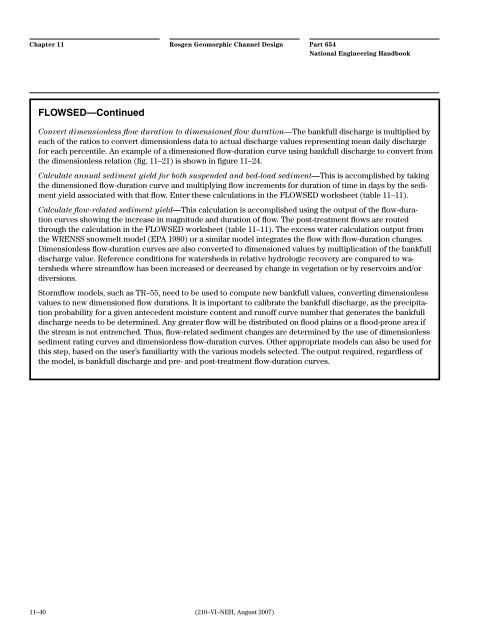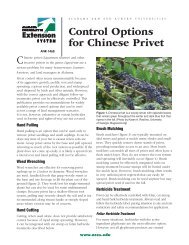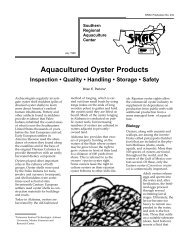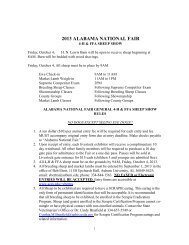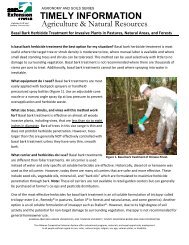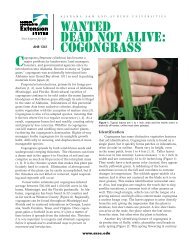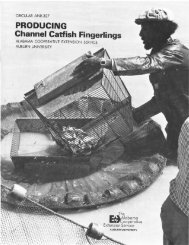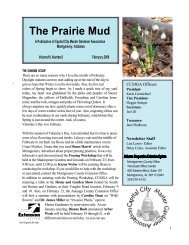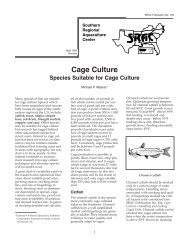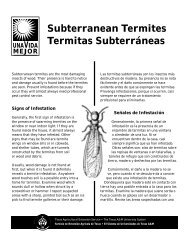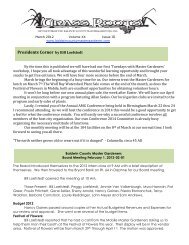Chapter 11--Rosgen Geomorphic Channel Design
Chapter 11--Rosgen Geomorphic Channel Design
Chapter 11--Rosgen Geomorphic Channel Design
Create successful ePaper yourself
Turn your PDF publications into a flip-book with our unique Google optimized e-Paper software.
<strong>Chapter</strong> <strong>11</strong><br />
FLOWSED—Continued<br />
<strong>Rosgen</strong> <strong>Geomorphic</strong> <strong>Channel</strong> <strong>Design</strong><br />
<strong>11</strong>–40 (210–VI–NEH, August 2007)<br />
Part 654<br />
National Engineering Handbook<br />
Convert dimensionless flow duration to dimensioned flow duration—The bankfull discharge is multiplied by<br />
each of the ratios to convert dimensionless data to actual discharge values representing mean daily discharge<br />
for each percentile. An example of a dimensioned flow-duration curve using bankfull discharge to convert from<br />
the dimensionless relation (fig. <strong>11</strong>–21) is shown in figure <strong>11</strong>–24.<br />
Calculate annual sediment yield for both suspended and bed-load sediment—This is accomplished by taking<br />
the dimensioned flow-duration curve and multiplying flow increments for duration of time in days by the sediment<br />
yield associated with that flow. Enter these calculations in the FLOWSED worksheet (table <strong>11</strong>–<strong>11</strong>).<br />
Calculate flow-related sediment yield—This calculation is accomplished using the output of the flow-duration<br />
curves showing the increase in magnitude and duration of flow. The post-treatment flows are routed<br />
through the calculation in the FLOWSED worksheet (table <strong>11</strong>–<strong>11</strong>). The excess water calculation output from<br />
the WRENSS snowmelt model (EPA 1980) or a similar model integrates the flow with flow-duration changes.<br />
Dimensionless flow-duration curves are also converted to dimensioned values by multiplication of the bankfull<br />
discharge value. Reference conditions for watersheds in relative hydrologic recovery are compared to watersheds<br />
where streamflow has been increased or decreased by change in vegetation or by reservoirs and/or<br />
diversions.<br />
Stormflow models, such as TR–55, need to be used to compute new bankfull values, converting dimensionless<br />
values to new dimensioned flow durations. It is important to calibrate the bankfull discharge, as the precipitation<br />
probability for a given antecedent moisture content and runoff curve number that generates the bankfull<br />
discharge needs to be determined. Any greater flow will be distributed on flood plains or a flood-prone area if<br />
the stream is not entrenched. Thus, flow-related sediment changes are determined by the use of dimensionless<br />
sediment rating curves and dimensionless flow-duration curves. Other appropriate models can also be used for<br />
this step, based on the user’s familiarity with the various models selected. The output required, regardless of<br />
the model, is bankfull discharge and pre- and post-treatment flow-duration curves.


